#stalbertchmielowski
Text
Feast of Heilige Maria im Walde/ Holy Maria in the Forest and Memorials of the Saints - 17 June
Feast of Heilige Maria im Walde/ Holy Maria in the Forest and Memorials of the Saints – 17 June
Heilige Maria im Walde/ Holy Maria in the Forest:
The Apparitions occurred in a wooded area near Dolina, Grafenstein, Carinthia, Austria on the 17, 18 and 19 June 1849 to three young shepherdesses.

—
St Adolph of Utrecht
St Agrippinus of Como
St Albert Chmielowski TOSF (1845-1916)
His Life:
https://anastpaul.com/2017/06/17/saint-of-the-day-17-june-st-albert-chmielowski-t-o-s-f-the-19th-century-polis…
View On WordPress
#bljoseph-mariecassant#heiligemariaimwalde#holymaryintheforest#saints17june#stalbertchmielowski#stherve
6 notes
·
View notes
Photo


Saint of the Day – 17 June – St Albert Chmielowski T.O.S.F. (1845-1916) – The Painter Who Became an Advocate for the Poor and then a Saint! Artist, Founder, Tertiary Franciscan, Apostle of Charity.
youtube
vimeo
This Krakow native’s experience of the Church was remarkably similar to that of Pope Francis. He strove to emulate the example of St Francis of Assisi, after whom Pope Francis took his papal name and was the living embodiment of the Church of the poor Francis has spoken so much about.
Adam Chmielowski was born into an aristocratic family in Igołomia, a village outside of Krakow, in 1845. Then, Poland formally didn’t exist: The once-mighty Polish state was partitioned between Austria, Prussia and Russia in 1772, 1773 and 1795. Yet the Polish people refused to accept this and many rebelled against the oppressors.
One such upheaval was the January Insurrection of 1863-1864, directed against the Russian Empire, in which the Poles fought bravely yet were brutally suppressed. Not yet 18, Adam took part. During one battle, a Russian grenade killed Adam’s horse and badly damaged his leg, which was amputated. Adam, however, didn’t take pity on himself; he stoically taught himself to function with a wooden limb and offered up the dismemberment to God for the cause of Polish independence.
After the uprising, Adam decided to pursue a career in painting and was accepted at the prestigious Academy of Fine Arts in Munich, where he studied with many famous Polish painters. Upon returning to Poland, Adam worked as a painter 1870-1885. In total, he produced 61 paintings . He quickly became one of the most feted Polish artists, living briefly in Warsaw and then in artsy, intellectual Krakow. Adam’s social circle consisted of the best-known Polish artists, actors and writers.

Yet Adam Chmielowski wasn’t happy with this glitzy life of celebrity. At one point, he was even hospitalised for depression. Adam remained a devout Catholic,and his paintings — including his masterpiece, the unfinished Ecce Homo, which depicts the mocked Christ — often dealt with religious themes.

He knew that he needed to grow closer to God. Adam briefly thought of becoming a Jesuit, but his enthusiasm fizzled after entering the novitiate. He kept asking God what He wanted of him.
Nineteenth-century Krakow was a city of social inequality. In Adam’s day, more than a fifth of its population consisted of the unemployed, who were frequently homeless. The filthy, lice-infested city homeless shelter had terrible sanitary conditions . The Church in Krakow, especially the Vincentians and other orders, aided the poor. However, this was insufficient.
At this time, Adam became increasingly attracted to St Francis of Assisi. This medieval champion of the poor’s ministry resonated with Krakow’s socioeconomic problems. Eventually, Adam welcomed the homeless into his own apartment. In 1887, Adam Chmielowski became a Third Order Franciscan and took vows at the hands of Krakow Archbishop Cardinal Albin Dunajewski. He began to call himself “Brother Albert” and wore a gray habit.

The following year, Brother Albert realised that to bring Krakow’s poor lasting change, the city’s homeless shelter would need reform. He negotiated an agreement with the city government, making him the institution’s caretaker. To finance the improvements, Brother Albert auctioned off his paintings. In addition to improving the material conditions, he banned alcohol in the shelter. He asked the poor to work (making exceptions for the elderly and those with disabilities), teaching them practical skills and lectured on the Catechism and the Gospels.
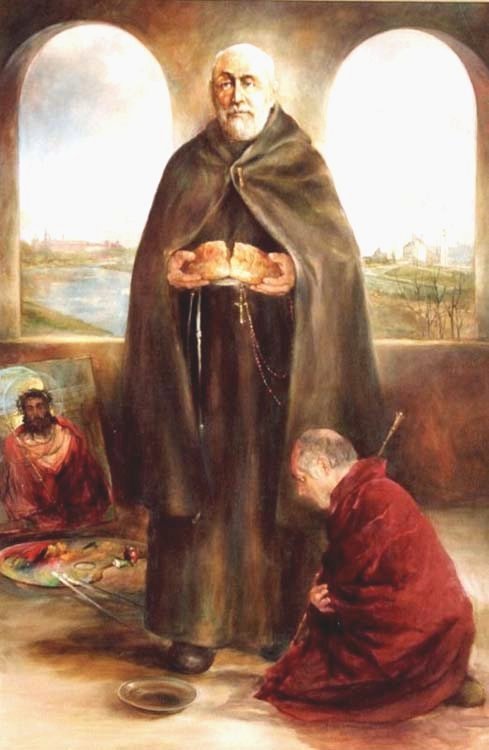
Eventually, Brother Albert founded two religious orders, the Albertine Brothers and Sisters, devoted to the poor. They set up homes for the poor, sick and elderly in 20 Polish cities. Brother Albert worked to help as many poor persons as possible until his death in 1916, amidst World War I. During that bloody conflict, he sent Albertine Brothers and Sisters to the trenches to aid war invalids. After his death, thousands of Kracovians visited his tomb, convinced that he died a saint.
Today, the Albertines run homes for the poor and sick all over the world. Visitors to Krakow can make a pilgrimage to the Albertine-run Ecce Homo Shrine, which features a museum devoted to St Albert and the famous titular painting. (NC Register)
– For more details and images here: https://anastpaul.wordpress.com/2017/06/17/saint-of-the-day-17-june-st-albert-chmielowski-t-o-s-f-the-19th-century-polish-saint-who-was-influenced-by-st-francis-of-assisi-later-influenced-pope-st-john-paul-ii/
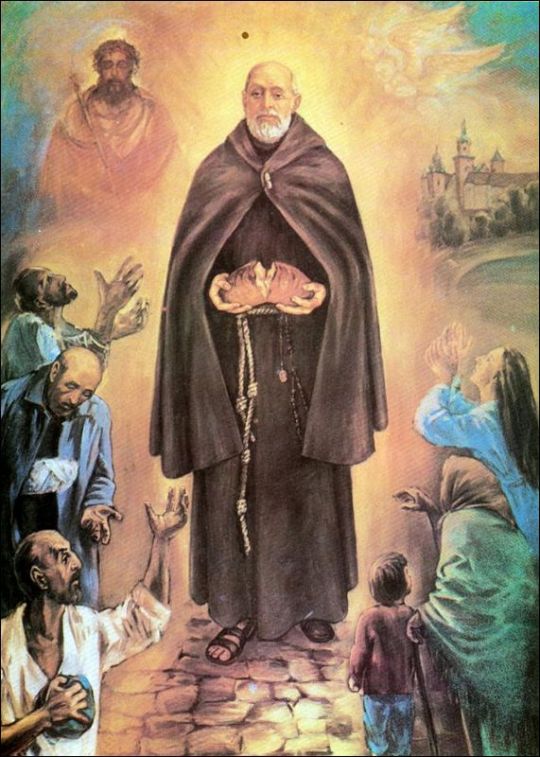
7 notes
·
View notes
Photo
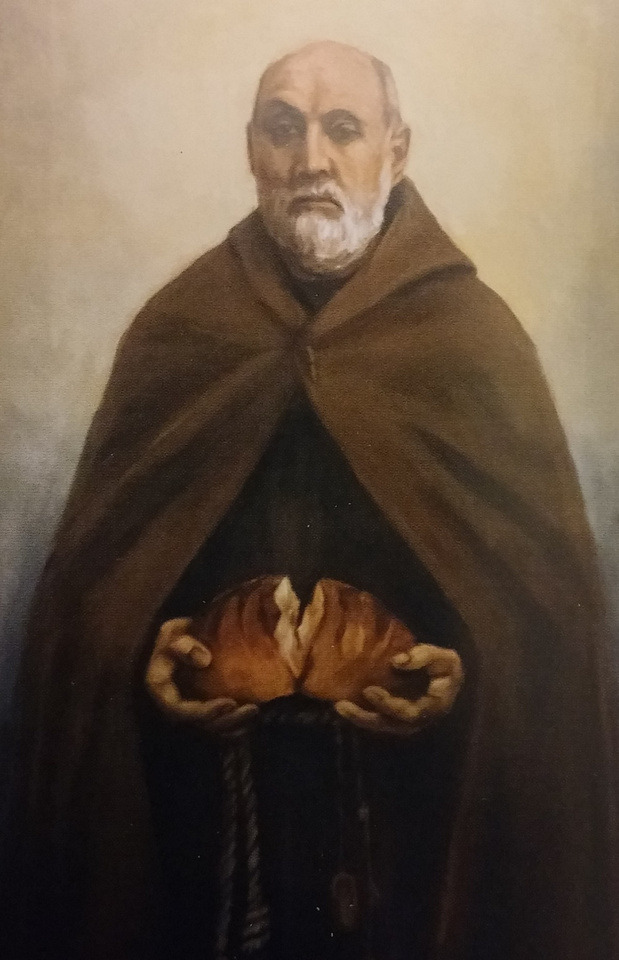
Saint of the Day – 17 June – St Albert Chmielowski T.O.S.F. (The 19th-century Polish saint who was influenced by St. Francis of Assisi later influenced Pope St. John Paul II.) (20 August 1845 at Igoalomia (Aigolonija), Poland as Adam Hilary Bernard Chmielowski – 25 December 1916 at Krakow, Poland, of natural causes). Canonised on 12 November 1989 by Pope John Paul II at Saint Peter’s Square, Rome. Professed religious of the Third Order of St Francis and the founder of both the Servants of the Poor and Sisters Servants of the Poor. Also known as: Adam Chmielowski, Adam Hilary Bernard Chmielowski, Brat Albert, Brother Albert, Brother of Our Lord, Brother of Our God, Our God’s Brother. Patronages – Painters, Servants of the Poor, Sisters Servants of the Poor, Franciscan tertiaries, Soldiers Volunteers, Harvests, Travellers, Puławy, Diocese of Sosnowiec. Attributes – priest’s attire or Franciscan robe.
Adam Chmielowski was born into an aristocratic family in Igołomia, a village outside of Krakow, in 1845. Then, Poland formally didn’t exist – the once-mighty Polish state was partitioned between Austria, Prussia and Russia in 1772, 1773 and 1795. Yet the Polish people refused to accept this and many rebelled against the oppressors.
One such upheaval was the January Insurrection of 1863-1864, directed against the Russian Empire, in which the Poles fought bravely yet were brutally suppressed. Not yet 18, Adam took part. During one battle, a Russian grenade killed Adam’s horse and badly damaged his leg, which was amputated. Adam, however, didn’t take pity on himself; he stoically taught himself to function with a wooden limb and offered up the dismemberment to God for the cause of Polish independence.
After the uprising, Adam decided to pursue a career in painting and was accepted at the prestigious Academy of Fine Arts in Munich, where he studied with many famous Polish painters. Upon returning to Poland, Adam worked as a painter 1870-1885. In total, he produced 61 paintings. He quickly became one of the most feted Polish artists, living briefly in Warsaw and then in artsy, intellectual Krakow. Adam’s social circle consisted of the best-known Polish artists, actors and writers.
Yet Adam Chmielowski wasn’t happy with this glitzy life of celebrity. At one point, he was even hospitalized for depression. Adam remained a devout Catholic and his paintings — including his masterpiece, the unfinished Ecce Homo, which depicts the mocked Christ — often dealt with religious themes.


He knew that he needed to grow closer to God. Adam briefly thought of becoming a Jesuit but his enthusiasm fizzled after entering the novitiate. He kept asking God what he wanted of him.
Nineteenth-century Krakow was a city of social inequality. In Adam’s day, more than a fifth of its population consisted of the unemployed, who were frequently homeless. The filthy, lice-infested city homeless shelter had terrible sanitary conditions. The Church in Krakow, especially the Vincentians and other orders, aided the poor. However, this was insufficient. At this time, Adam became increasingly attracted to St. Francis of Assisi. This medieval champion of the poor’s ministry resonated with Krakow’s socioeconomic problems. Eventually, Adam welcomed the homeless into his own apartment. In 1887, Adam Chmielowski became a Third Order Franciscan and took vows at the hands of Krakow Archbishop Cardinal Albin Dunajewski, taking the name Albert. He began to call himself “Brother Albert” and wore a gray habit.
The following year, Brother Albert realized that to bring Krakow’s poor lasting change, the city’s homeless shelter would need reform. He negotiated an agreement with the city government, making him the institution’s caretaker. To finance the improvements, Brother Albert auctioned off his paintings. In addition to improving the material conditions, he banned alcohol in the shelter. He asked the poor to work (making exceptions for the elderly and those with disabilities), teaching them practical skills and lectured on the Catechism and the Gospels.
Eventually, Brother Albert founded two religious orders, the Albertine Brothers and Sisters, devoted to the poor. They set up homes for the poor, sick and elderly in 20 Polish cities. Brother Albert worked to help as many poor persons as possible until his death in 1916, amidst World War I. During that bloody conflict, he sent Albertine Brothers and Sisters to the trenches to aid war invalids. After his death, thousands of Kracovians visited his tomb, convinced that he died a saint.
Today, the Albertines run homes for the poor and sick all over the world. Visitors to Krakow can make a pilgrimage to the Albertine-run Ecce Homo Shrine, which features a museum devoted to St. Albert and the famous titular painting.
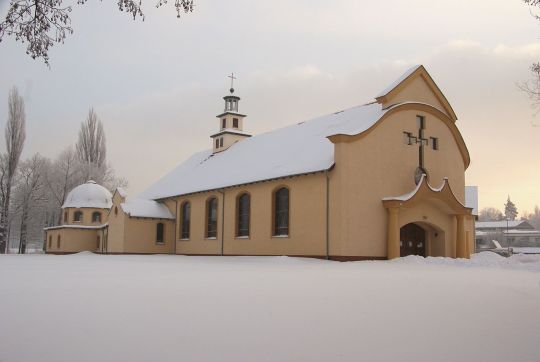
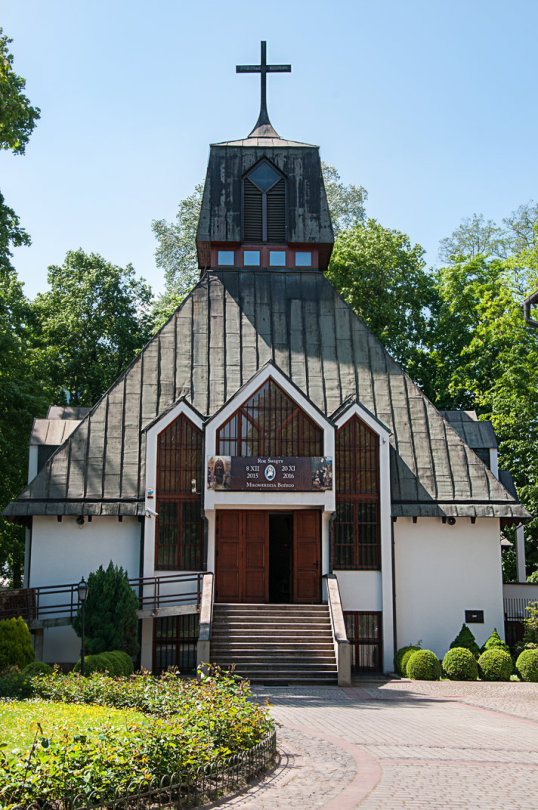


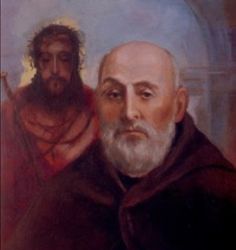
St. Albert Chmielowski greatly inspired St. John Paul II. In 1938, when Karol Wojtyła started his studies in Polish literature at the Jagiellonian University, he was a young, promising actor, playwright and poet. Yet his calling to serve God and the Church was stronger than his love for the arts. In this, he found inspiration in his fellow artist St. Albert Chmielowski.
In 1949, the young Father Karol Wojtyła wrote a play about him titled Our God’s Brother. A Kracovian urban legend had it that Brother Albert met Vladimir Lenin (who lived in Krakow after being expelled from Russia) and debated him on how to best alleviate poverty. The play features imagined dialogues between the saint and the communist revolutionary (called “the Stranger”), powerfully showing the difference between the Christian and Marxist approach: The former argues that poverty can be overcome by seeing God’s image in the individual, while the latter reduces all to class struggle and argues that the rich must be violently overthrown. After his election as pope, John Paul beatified St. Albert in 1983 and canonised him in 1989.
St Albert Chmielowski, Pray for us!
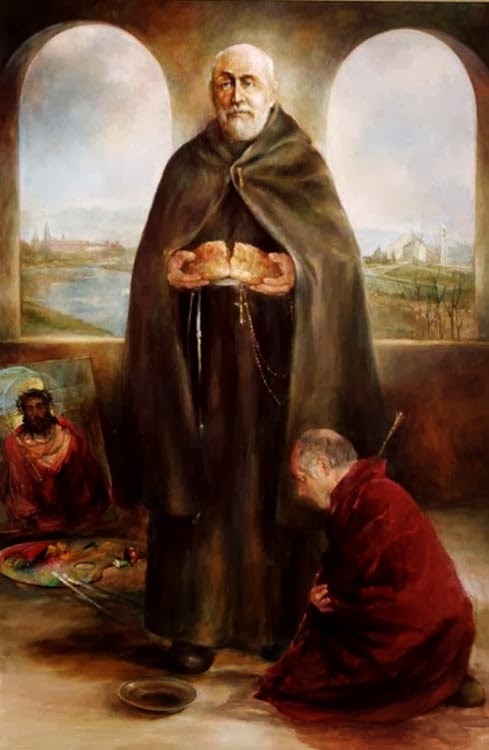
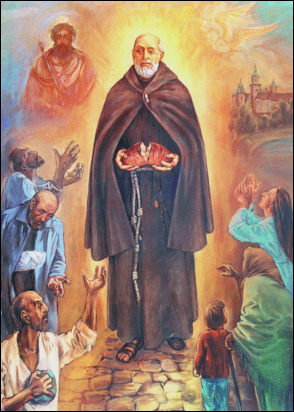

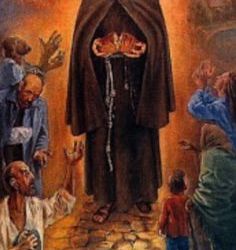
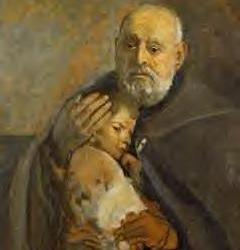
36 notes
·
View notes
Photo
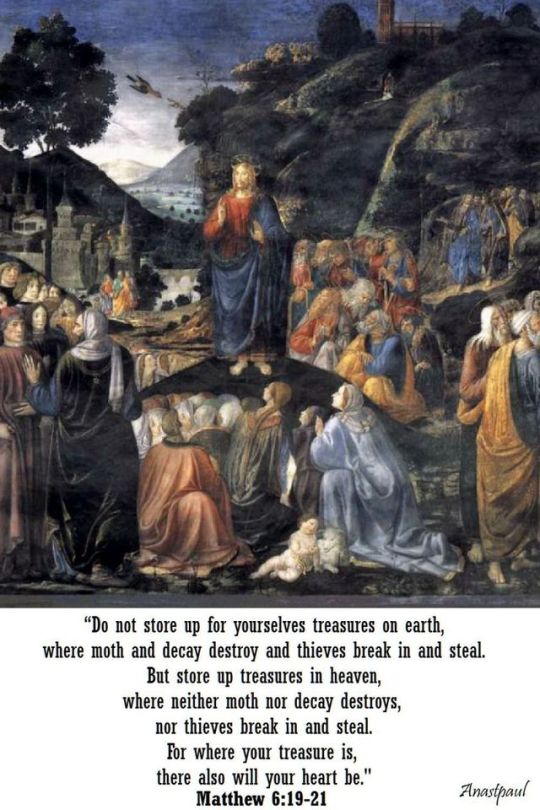
One Minute Reflection – 17 June
“Do not store up for yourselves
treasures on earth,
where moth and decay destroy
and thieves break in and steal.
But store up treasures in heaven,
where neither moth nor decay destroys,
nor thieves break in and steal.
For where your treasure is,
there also will your heart be.”….Matthew 6:19-21
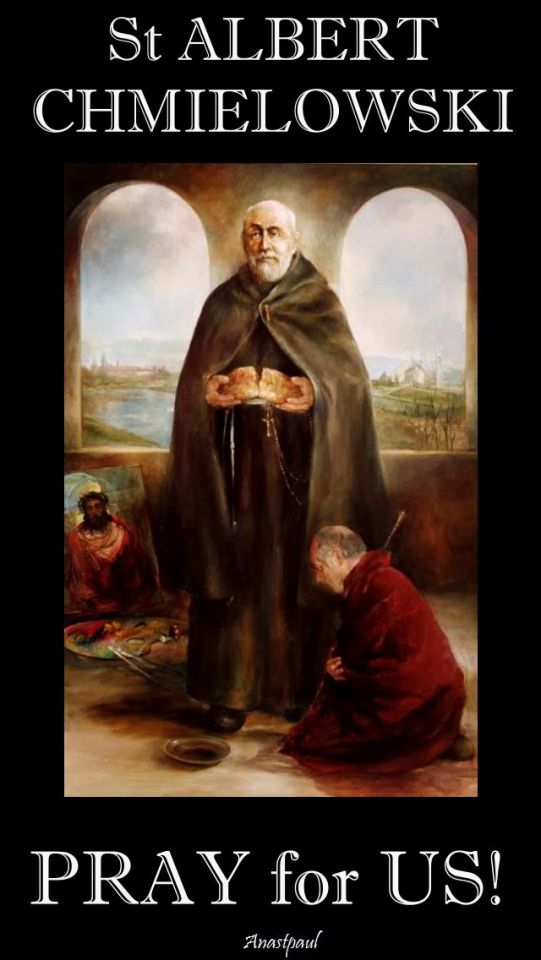
REFLECTION – Reflecting on his own priestly vocation, Pope John Paul II wrote in 1996 that Brother Albert had played a role in its formation …..“because I found in him a real spiritual support and example in leaving behind the world of art, literature and the theater and in making the radical choice of a vocation to the charity” ………..St John Paul speaking of St Albert Chmielowski (Gift and Mystery: On the Fiftieth Anniversary of My Priestly Ordination)
PRAYER – Father of goodness, make me realise and understand that each and all of my brothers represent the face of Jesus and that He is the only way to You for us all! Help me to extend all of myself to my neighbour in loving imitation of Your Son. St Albert Chmielowski, pray for us that we too may be a light in the darkness of this world, to all who call out to us in their pain and suffering. And please pray for us! Amen
#mypics#mypic#stalbertchmielowski#oneminutereflectionjune17#stjohnpaul#catholic#catholicism#matthew6:19-21
5 notes
·
View notes
Photo
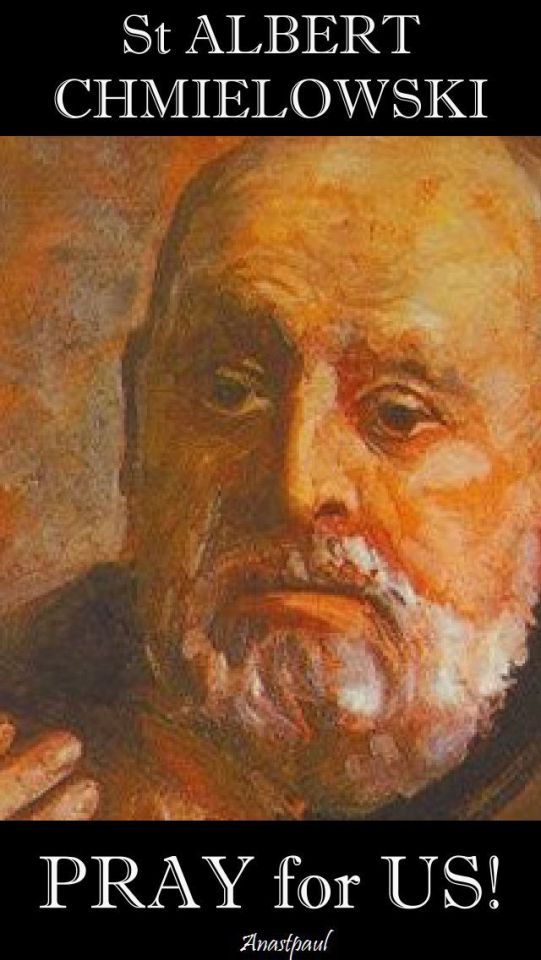
Thought for the Day – 17 June
From his installation of showers for homeless Romans at the Vatican to his spontaneous meetings with the poor, Pope Francis has beautifully shown that the Church has a “preferential option for the poor,”. The life and work of St Albert Chmielowski, likewise, reminds us that a particular vocation of the Christian is to love the poor, marginalised, weak and those with disabilities. In today’s self-centred age, when professional success is seen as the greatest good and money is the driving force of our lives, St. Albert Chmielowski — who gave up the life of a celebrity painter to serve Christ by helping the poor — challenges us to ask if we focus too much on worldly goals and ignore life’s true meaning. “But seek first the kingdom [of God] and his righteousness,* and all these things will be given you besides.” (Matthew 6:33).
St Albert Chmielowski, pray for us!
(via AnaStpaul – Breathing Catholic)
2 notes
·
View notes